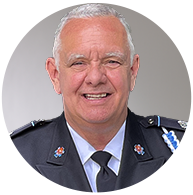Blog
Exercise and Cerebral Palsy

In addition to the typical treatments that children with cerebral palsy receive, such as medication and surgery, exercise is also important. Children who have CP can benefit both physically and mentally from an exercise program. Learn more about how a tailored exercise program can help improve your child’s symptoms and well-being as well as what types of exercise are most impactful for children with CP.
Why Is Exercise Important for Children With Cerebral Palsy?
Exercise is a critical component of overall health and well-being for both children and adults. Children with CP may be less likely to get the necessary physical activity due to their mobility limitations. There are many forms of exercise that can overcome mobility limitations and help alleviate common CP symptoms present in the three main types of cerebral palsy:
- Spastic: Spastic cerebral palsy can cause jerky movements and muscle tension. Exercise and stretching can reduce spasticity and alleviate stiffness.
- Athetoid: Athetoid CP, also known as dyskinetic CP, is associated with involuntary movements. Exercise can build muscle tone and give patients more control over movement.
- Ataxic: Ataxic CP affects depth perception, coordination, and balance. Exercise can help with imbalance and coordination.
Additionally, combining regular exercise and physical therapy can help children with cerebral palsy address a range of other conditions that are commonly associated with CP, such as:
- Thoracic kyphosis
- Scoliosis
- Lumbar lordosis
- Knee deformity
- Pelvic inclination, rotation or obliquity
- Abnormal flexing in the hands and wrists
- Shortened Achilles tendon
According to a National Institutes of Health (NIH) study, adults with cerebral palsy may be at higher risk for conditions like cardiovascular disease and diabetes. Incorporating exercise early on can be important to increasing functionality and reducing the symptoms of CP, but it can also help to reduce the risk of such diseases later in life.
The specific exercises that will be most beneficial will vary according to the type and severity of CP that your child has. Always consult your child’s doctor and other healthcare providers before taking up a new exercise routine for your child.
What Benefits Does Exercise Provide for Children With CP?
The same NIH study suggests that exercise for children with cerebral palsy can help strengthen muscles, improve motor skills, and maximize function.
Exercise can be paired with physical therapy, massages, heat treatment, flexibility exercises, and other treatments. Exercise and physical therapy for children with CP can be helpful for the three main types of cerebral palsy:
- Spastic CP: Stretching can help reduce stiffness and, over time, reduce the uncontrollable movements and muscle tension associated with spastic CP.
- Athetoid CP: Strength training can help children gain muscle tone and control over movement.
- Ataxic CP: Exercises specifically designed to improve balance can help to alleviate the symptoms of ataxic CP.
Building muscle strength can make everyday movement easier and increase their overall functionality, which can even improve a child’s ability to participate in school and social events.
How Much Exercise Should Kids With CP Get?
The general recommendation is that children with CP get at least 60 minutes of physical exercise, five days per week or more. However, this is just a general recommendation, and each child’s needs will vary depending on their age and ability, among other factors. Your child’s doctor or physical therapist will be able to give you a more specific idea about how much exercise your child needs.
Best Types of Exercise for CP Patients
Exercises for cerebral palsy can range in approach, with specific focuses for the different types of CP. But because most people with cerebral palsy will experience spasticity, therapists will often focus on building postural stability and flexibility. Many exercises for cerebral palsy patients work to develop these two aspects.
When it comes to postural stability, exercises for mild cerebral palsy and beyond work to keep the body’s center of gravity stable while the patient is both stationary and in motion, like when they’re sitting or reaching for something. Swimming and other water-based exercises are fun and motivating, and one study has shown this to help develop stronger postural stability in preschoolers with spastic CP.
As for flexibility, stretching can help to elongate tight muscles and work to keep your child from developing abnormal posture or having stiff movements. Stretches that target the legs and shoulders are most often recommended. It’s important to note that stretching won’t get rid of spasticity, but it can limit its effects and should be thought of as a preventive measure that pairs with other treatments and exercises.
Exercise is critical for children with cerebral palsy. Instead of focusing on what they can’t do, focus on what your child can do with an exercise routine. Exercise and physical therapy is one part of a suite of alternative or complementary treatments for children with cerebral palsy.
While exercise can help to manage your child’s CP, remember that you have options if you need help paying for these treatments and you suspect that your child’s CP developed due to medical negligence. If you’re wondering if you may qualify for compensation, the Cerebral Palsy Family Lawyers at Janet, Janet & Suggs, LLC have years of experience, combined with our legal and medical expertise. Contact us today and let us help you and your family seek justice.

William R. “Topper” Cramer, RN, MBA, MS, CCRN, CFRN, EMT-P
Legal Nurse Consultant | Nurse Paralegal
Topper has been involved in emergency, transport, and critical care medicine since 1978 when he became an EMT in high school. A United States Air Force veteran, he remains active as a pre-hospital RN/paramedic, certified flight nurse, and critical care nurse. In addition to his professional role as a nurse consultant/nurse paralegal, he is the Chief of Operations at Walkersville Volunteer Rescue in Frederick County, Maryland. READ FULL BIO
